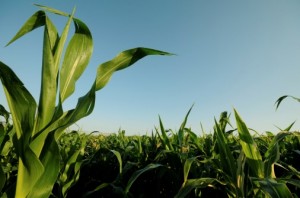31
May
Neonicotinoid Seed Coatings Create Exposure Hazards for Honey Bees and Fail to Increase Yields
(Beyond Pesticides, May 31, 2017) Neonicotinoid-treated corn seeds produce lethal and sub-lethal exposure risks to honey bees and do not increase yields for farmers, according to a recent study by researchers at Purdue University. The study, published in the Journal of Applied Ecology, Planting of neonicotinoid-treated maize poses risks for honey bees and other non-target organisms over a wide area without consistent crop yield benefit, examines neonicotinoid (neonic) dust drift during corn planting in Indiana and the likelihood of honey bee exposure during foraging. The study results and subsequent analysis using public data of apiary locations indicate that over 94% of honey bee foragers in Indiana are at risk of exposure to varied levels of neonics, including lethal levels, during corn sowing. Researchers also performed a three-year field assessment of the purported benefits from neonic seed coatings for pest management, finding that there is no evidence of increased corn yields compared to sites with no neonic seed treatments.

According to the lead author of the study, Christian Krupke, Ph.D., in an interview with Purdue Extension, “There was a misconception that any bees not living near corn were likely to be fine. But that’s not true, and it’s clear that these insecticides are reaching into the places bees forage and putting them at risk.” The research team set up neonic dust collection traps at 12 corn fields around Indiana and collected samples over two years to determine the levels of pesticide dust at increasing distances from the corn field edges. The data demonstrate the movement of neonic residues outside the borders of planted fields, and the researchers estimate that residues on non-target lands and waterways will be deposited on over 42% of the state of Indiana during the corn planting season.
The second aspect of the study looked at the role of neonic corn seed coating for pest control and yield increases. The research team tested untreated seeds and seeds treated with clothianidin and a fungicide at a low rate and a high rate at three different sites in Indiana, with measurements taken on root damage, early season plant count, and late season yield estimates. These data fail to demonstrate any significant benefit, measured in crop yields, from planting neonic-treated corn seeds.
Although neonics are marketed as highly beneficial for farmers, this study and other recent evidence contradicts this claim. Arguments in favor of these chemicals assert that they provide continuous protection from insect pests to the plant throughout the majority of the growing season, without the need for repeat applications. However, a 2014 EPA report offers evidence that neonic use in soybeans does not translate to better yields, with the finding that soybean seeds coated with the neonics imidacloprid, thiamethoxam, and clothianidin “provide negligible overall benefits in [yield] in most situations” when compared with no insect control treatment. A 2015 study finds that the use of aldicarb soil insecticide and thiamethoxam-coated seed does not reduce cutworm damage, and that plots treated with these insecticides actually had a higher percentage of defects when compared to untreated plots. Other studies, including a 2014 Center for Food Safety review of the literature on the subject, finds that the benefits of prophylactic neonic use via seed coatings were nearly non-existent, and that any minor benefits were negated due to honey bee colony impacts, reduced crop pollination by honey bees, loss of ecosystem services, and market damage from contamination events.
This study comes at a time when neonic-treated seeds are pervasive and widely used across the agricultural landscape, home gardens, and public spaces. Of the two most widely planted crops in the U.S., between 79 to 100 percent of corn seed and 34 to 44 percent of soybean seed were treated with neonics in 2011. A conservative estimate of the area planted with neonic-treated corn, soybean, and cotton seed totals just over 100 million acres, or 57 percent of the entire area for these crops.
Systemic neonic pesticides move through the plant’s vascular system and are expressed through pollen, nectar, and guttation droplets. These pesticides have been found by a growing body of scientific literature to be linked to pollinator decline in general. Neonics are associated with decreased foraging and navigational ability, as well as increased vulnerability to pathogens and parasites as a result of suppressed bee immune systems. While the benefits to farmers are insignificant, the harm neonics cause to the wider environment is of serious concern. The dust released from planting coated seeds can drift off-field and contaminate field margins with high levels of these toxic pesticides. The Center for Food Safety’s 2016 report, Net Loss, cites findings that, depending on the crop, only five percent of the active chemical in a seed coating actually enters a crop. The other 95% of the chemical makes its way into the environment, either through seed dust, soil contamination, or water runoff.
With one in three bites of food reliant on bees, other insects, and birds for pollination, the decline in pollinators due to pesticides demands immediate action. For more on this and what you can do to protect pollinators, visit Beyond Pesticides’ BEE Protective webpage. Show appreciation for both wild and managed pollinators by taking local action. Get involved at the community level to pass policies that protect imperiled pollinators.
Sources: Purdue Extension, Agriculture.com
All unattributed positions and opinions in this piece are those of Beyond Pesticides.










